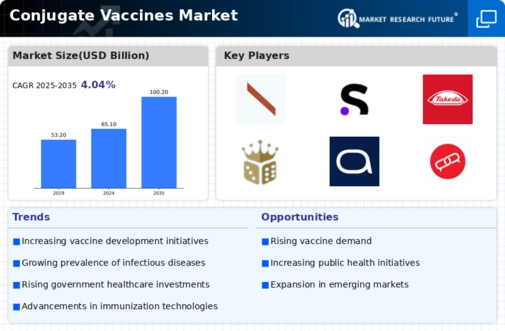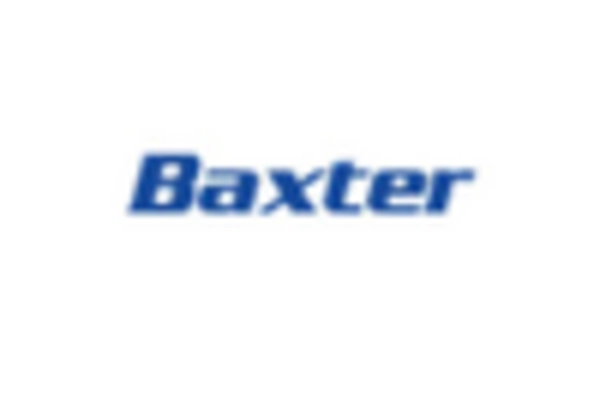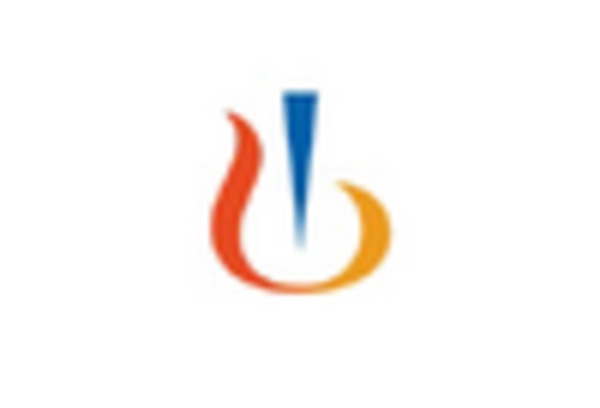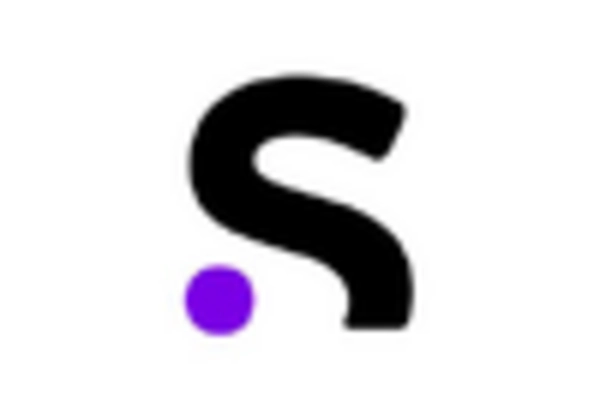Government Initiatives and Funding
Government initiatives play a crucial role in shaping the Conjugate Vaccines Market. Various governments are increasingly recognizing the importance of vaccination in public health strategies. This recognition has led to enhanced funding for vaccine research and development, as well as the implementation of national immunization programs. For example, several countries have allocated substantial budgets to procure conjugate vaccines, aiming to improve vaccination coverage rates. This proactive approach not only boosts the market but also encourages collaboration between public and private sectors, fostering innovation in vaccine technology. The financial support from governments is likely to sustain the growth trajectory of the conjugate vaccines market in the coming years.
Growing Awareness of Vaccine Benefits
The Conjugate Vaccines Market is significantly influenced by the growing awareness of the benefits of vaccination among the general population. Educational campaigns and outreach programs have effectively communicated the importance of vaccines in preventing serious diseases. As a result, there is an increasing acceptance of conjugate vaccines, particularly among parents for their children. This trend is reflected in vaccination rates, which have shown improvement in various regions. The World Health Organization has reported that vaccination coverage for conjugate vaccines has reached over 80% in many countries, indicating a positive shift in public perception. This heightened awareness is expected to further propel the market as more individuals seek preventive healthcare solutions.
Rising Incidence of Infectious Diseases
The Conjugate Vaccines Market is experiencing a notable surge due to the increasing incidence of infectious diseases worldwide. As pathogens evolve and new strains emerge, the demand for effective vaccines becomes paramount. For instance, diseases such as pneumococcal infections and meningitis have shown a rising trend, prompting health authorities to prioritize vaccination programs. This heightened awareness and urgency have led to an estimated growth rate of approximately 8% in the conjugate vaccines segment over the past few years. Consequently, pharmaceutical companies are investing significantly in research and development to create innovative conjugate vaccines that can address these challenges, thereby driving the market forward.
Increasing Investment in Vaccine Research
Investment in vaccine research is a pivotal driver for the Conjugate Vaccines Market. With the ongoing need for new and improved vaccines, both public and private sectors are channeling resources into research initiatives. This influx of funding is facilitating the development of novel conjugate vaccines that target a broader range of pathogens. Recent reports indicate that global investment in vaccine research has increased by over 15% in the last few years, reflecting a commitment to enhancing public health. This trend is expected to continue, as stakeholders recognize the long-term benefits of investing in vaccine innovation, thereby propelling the conjugate vaccines market to new heights.
Technological Innovations in Vaccine Production
Technological innovations are transforming the Conjugate Vaccines Market, leading to more efficient and effective vaccine production processes. Advances in biotechnology, such as recombinant DNA technology and novel adjuvants, are enhancing the efficacy and safety profiles of conjugate vaccines. These innovations not only streamline the manufacturing process but also reduce production costs, making vaccines more accessible. The introduction of new conjugate vaccines, which utilize cutting-edge technology, is anticipated to capture a larger market share. As manufacturers adopt these technologies, the overall market is likely to expand, driven by the demand for high-quality vaccines that can address emerging health threats.


















Leave a Comment